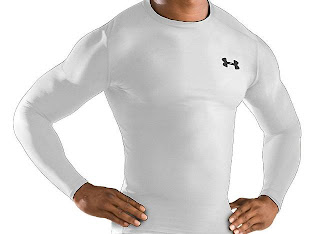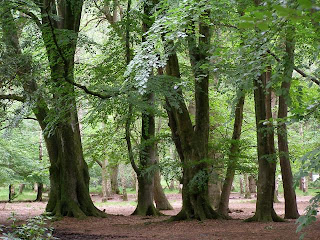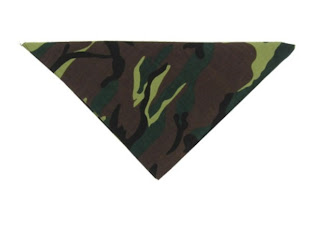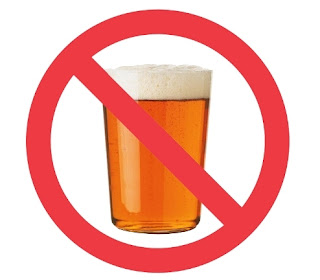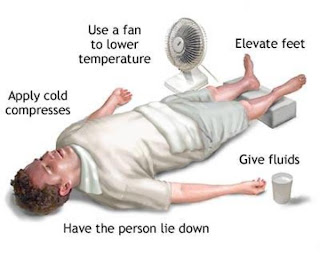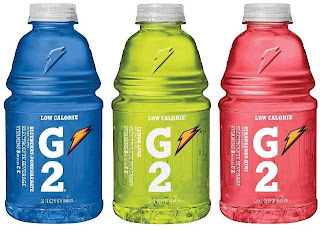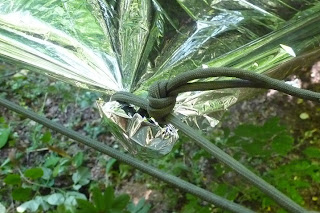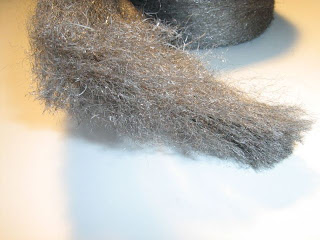For many people, insect repellents that contain Deet can irritate your skin and even cause some people to break out. Little do most people know that you can make your own insect repellent at home with just a handful of ingredients. In fact, some people swear that homemade repellent is better than anything you can buy at the store. All you need is Aloe Vera gel, vegetable oil, and cedar oil. If you can’t find cedar oil, then you can also use sassafras or pure citronella oil. First mix 30% Aloe Vera, 55% vegetable oil, and 15% cedar oil. Allow it to sit for about 15 minutes and then you’re ready to apply it. Check for your sensitivity to the ingredients by applying a small amount to your forearm or behind your knee and watch it for several hours. If you don’t see any redness or other signs of allergens then you should be just fine. Some people might be allergic to some of the ingredients and not know it, so it’s always better to test yourself first to make absolutely positive before you rub a large amount of it all over your body. Also while wearing your homemade bug repellent, try not to wear dark colored clothing as mosquitoes, flies, and other insects are attracted to dark colors. Try wearing bright colored clothing as it will just further help deter pesky insects.
Thursday, March 17, 2011
How To Make Your Own Insect Repellent
For many people, insect repellents that contain Deet can irritate your skin and even cause some people to break out. Little do most people know that you can make your own insect repellent at home with just a handful of ingredients. In fact, some people swear that homemade repellent is better than anything you can buy at the store. All you need is Aloe Vera gel, vegetable oil, and cedar oil. If you can’t find cedar oil, then you can also use sassafras or pure citronella oil. First mix 30% Aloe Vera, 55% vegetable oil, and 15% cedar oil. Allow it to sit for about 15 minutes and then you’re ready to apply it. Check for your sensitivity to the ingredients by applying a small amount to your forearm or behind your knee and watch it for several hours. If you don’t see any redness or other signs of allergens then you should be just fine. Some people might be allergic to some of the ingredients and not know it, so it’s always better to test yourself first to make absolutely positive before you rub a large amount of it all over your body. Also while wearing your homemade bug repellent, try not to wear dark colored clothing as mosquitoes, flies, and other insects are attracted to dark colors. Try wearing bright colored clothing as it will just further help deter pesky insects.
Thursday, March 10, 2011
How To Stay Cool In The Summer Heat
It’s that time of year again when the weather begins to warm up as we start approaching Summer. Before we know it, we’ll start seeing some triple digit temperatures. Dealing with excessive heat and high temperatures to most people means staying indoors, but for those of us that are outside then that means we must be extra careful to take care of ourselves. When you talk about high temperatures, many people feel as if they know exactly what to do when this time of year approaches. However hundreds of people die each year in the U.S. due to heatstroke or temperature related illnesses. In Fact, more people die each year due to temperature related illnesses than all other natural disasters combined including floods, tsunamis, hurricanes, earthquakes, and even tornado's. Therefore it’s always good to remind others about the proper ways with coping with high temperatures. Also, keep in mind that it takes most people’s bodies about 2 weeks to properly acclimate themselves to hot weather so take it slow the first couple of days and let your body adapt properly. I have listed several tips below to help keep you cooler and help monitor your water intake too.
Clothing – you want to wear clothing that is breathable, loose fitting, and in lighter colors. Dark colors like blacks, blues, grays, etc… will all be considerably warmer when in direct sunlight than whites, tans, yellows, very light grays, ect… that can actually help reflect some of the suns light and heat away from your body. Clothes that are loose fitting also help provide breathing room in between your skin and actually even help your body cool easier when sweating. Breathable clothes will ensure that some of the heat escapes from your body and allow as much airflow as possible to circulate. Also try to stick with wearing natural fibers such as cottons, linens, and silks instead of artificial fibers that can make temperatures more unbearable. One exception to artificial fibers however is Under Armour or the like, that are specifically designed for heat reduction. In the worst of climates, it may be necessary for you to try and cover all of your skin from sun exposure. This will actually help provide shade for your skin and decrease direct sunlight which can raise your body temperature. Just keep the coverings light, loose, and breathable.
Stick To The Shade – even though this sounds common sense, try to think about it in much more detail. If you’re planning a hiking trip in the middle of the day and have two trails in mind to choose from. Think about which one provides the most shade and indirect sunlight. Sometimes a longer trail heavy in shade is a better choice than a short trail in direct sunlight and can take a lot less out of you.
Water – Drink LOTS of Water! Water is the key component within your body and accounts for about 60% of your body weight. You need to drink water and pace yourself throughout the day. Don’t just drink when you become thirsty because you might already be showing some symptoms of the first stages of dehydration like feeling sluggish and tired. The exact amount of water your body needs is different from person to person and depends on many variables including, age, weight, climate, activity level, ect… Most people are recommended to intake about 8 to 9 cups of water each day. However more active people need to account for their surroundings and increase their intake to match that of their total output or surpass it. This may mean increasing your intake to 12 to 13 cups per day to nearly doubling it. To better gauge yourself, you want to drink enough water to rarely become thirsty and to ensure your urine stays colorless or slightly yellow. You want to avoid having dark or murky urine because that is a good indication that your water intake is not sufficient and that your body may not have enough water to properly remove toxins from your vital organs or flush out your system.
Soak Yourself – A great way to stay cool on a hot day is to either soak your shirt, bandana, hat, or even shorts in cool water. The slightest breeze will feel significantly cooler especially in the shade. If you feel yourself sweating profusely, then this provides a great way to cool down and take a break. You can also run cold water over your wrists, ankles, behind your knees, elbows, and neck. These are all points among your body that your veins and arteries run closest to your skin and are easiest to cool off and help dissipate heat. Try running cool water over these points or loosely tying a wet bandana or other device around them to help relieve some heat buildup.
Avoid Caffeine And Alcohol – These only promote dehydration and can trick your body into not triggering your thirst receptors within your brain as well as stimulate the production of urine.
Breathe Out Of Your Nose Rather Than Your Mouth – this is a great trick that I’ve used for years now. When you’re outside, breathe out of your nose rather than your mouth to help your body better conserve its water supply. Breathing out of your mouth requires your body to provide more moisture to your throat, mouth, and nasal pathways as the action of breathing in and out removes the moisture from those areas. Breathing through your nose will dramatically decrease this moisture loss and helps keep you from getting dry mouth or cotton mouth in hot climates.
Exert Yourself Wisely – keep a steady pace hiking, biking, running, jogging, etc… but don’t over exert yourself. Try to divide up a hard task among the day so that you don’t wear yourself out all at once and try to focus the harder tasks toward the cooler times of day either earlier or later than the mid day high temperatures.
Avoid Eating Large Meals – instead, divide up what you would normally eat in three large meals into 6 smaller meals. This will take smaller amounts of water away from the rest of your body in order for your stomach to digest a meal. The larger the meal, the more water your body will require to help digest it.
Know The Symptoms Of Heatstroke And Heat Exhaustion – This can include one or a combination of the following: rapid and shallow breathing, dry tongue and lips, cotton mouth, rapid heartbeat and pulse, confusion and disorientation, dizziness, dilated pupils, headache, fatigue and weakness, upset stomach, diarrhea, vomiting, high or low blood pressure, muscle cramps, and even unconsciousness. These are things you need to watch out for yourself as well as others. If you realize that either yourself or someone else is starting to show symptoms, then get yourself/them to a cool and shady location, dissipate as much heat a possible, let yourself/them very slowly drink some cold water, and monitor your/their conditions. If the conditions worsen then you may need to treat yourself/them with an emergency ice bath in order to drop your core temperature or rush them to an emergency room as soon as possible. If you yourself are in trouble, then call for help and avoid driving yourself unless it is absolutely necessary. You could run the risk of blacking out while driving.
How To Start A Fire With An Aluminum Can
First, locate an aluminum soda can either by checking your supplies or even checking waterways or other locations for discarded cans. It's sad that this is the case, but you would be surprised just how far you can be from civilization and still be able to find litter among a river, lake, coast, etc... Often aluminum cans and water bottles are the most abundant. Next, locate either chocolate, any kind of powdered abrasive, or even toothpaste. Apply it to the bottom of the aluminum can and using some type of cloth, polish the bottom of the can until it produces a shiny reflective surface. Depending on what kind of abrasive agent you are using, this could take anywhere from 15 minutes to the better part of an hour. Keep adding the abrasive accordingly while continuing to polish the bottom of the can. When a near mirror image is produced then wash off the bottom of the can and clean it. This polished surface will act much like a convex lens which will concentrate the power of the sun into the middle focal point hot enough to ignite small tinder. Now by either holding the can or using a homemade platform of rocks or sticks, angle the can towards the sun. Much like using a magnifying glass, direct sunlight is key. This means that the best time of day to harness and focus the power of the sun is during the heat of the day. This will vary according to climate and geographic location but typically ranges from 11:00 A.M. to 2 P.M.. Using either your hand or a small twig, hold a piece of tinder approximately about an inch away from the center most point of the can. It's usually best to try to use a very thin twig so that you don't block anymore sunlight than you have to. When the tinder begins to smoke, blow on it carefully until it ignites and then transfer it to your fire bundle.
Monday, March 7, 2011
Making And Using A Rock Lock
When I’m building a shelter, securing a tarp, or using a material that does not contain anchors, grommets, or attachment points, I often use what some people call a “Rock Lock” or “Monkey Fist”. This provides a point in the material that allows you to attach a tie down, stake it down, or fasten it to some other object. To make a Rock Lock, just locate a rock that is about 2 inches in diameter and has no sharp points that could damage the material. Place the rock within the material where you prefer it’s placement and rap the material around it. If it’s a thin material, you may rap it several times to ensure extra strength. Twist the rock so that the material tightens and provides an attachment point for cordage. Then wrap your cordage around this point twice and tie a knot to secure it. Now attach the cordage to the preferred tie down location and your Done! This provides a strong, wind proof, and secure attachment point that is considerably better than most pre-made attachment points and requires no cutting of the material so it can be used for multiple other tasks later on.
Thursday, March 3, 2011
Survival Kit Components
A Survival Kit is a must have for any outdoor enthusiast but is also highly recommended to all people in general. Every year, people around the world are displaced by major nature disasters and other elements in life that require survival like demands such as shelter, food, water, and medical aid. These situations could include hurricanes, tornado's, tsunamis, tropical storms, power loss, loss of water, terrorist attacks, and many more situations that could require items that you might not usually stock in your household. It is also highly recommended that you take a combination of the items listed below anytime that you are out in the wilderness. Although you don’t have to take everything with you, you do need to prioritize the items according to where you will be going and take as much as you can pack or as much extra weight as you can afford to carry. If you will be using a motor vehicle of some kind for the majority of the outdoor excursion, then there is no reason not to pack heavily. In survival situations, it is always better to be overly prepared rather than under prepared. Here are just a few items that one could include in their survival kit, I will continue to add more items as time goes on:
Ultra fine steel wool & Jute rope – can be used as tinder
Petroleum Jelly Lip Balm – can be used with tinder to make the flame burn hotter and longer
Water Purification Tablets – used to chemically purify water when boiling is not possible
Water Filter – used for filtering water when boiling water is not possible
Bow Saw – used to cut limbs, trees, wood, or even rock given the right type of blade, preferably foldable for easy storage
Insect Repellent – multi insect repellent works best but important in swampy or mosquito prone areas
Protein Powder – very high in protein, lasts years as long as it doesn’t get wet, light weight
Multi-Vitamin Tablets - provides essential vitamins and minerals over long periods of time when food sources are limited
Subscribe to:
Posts (Atom)


